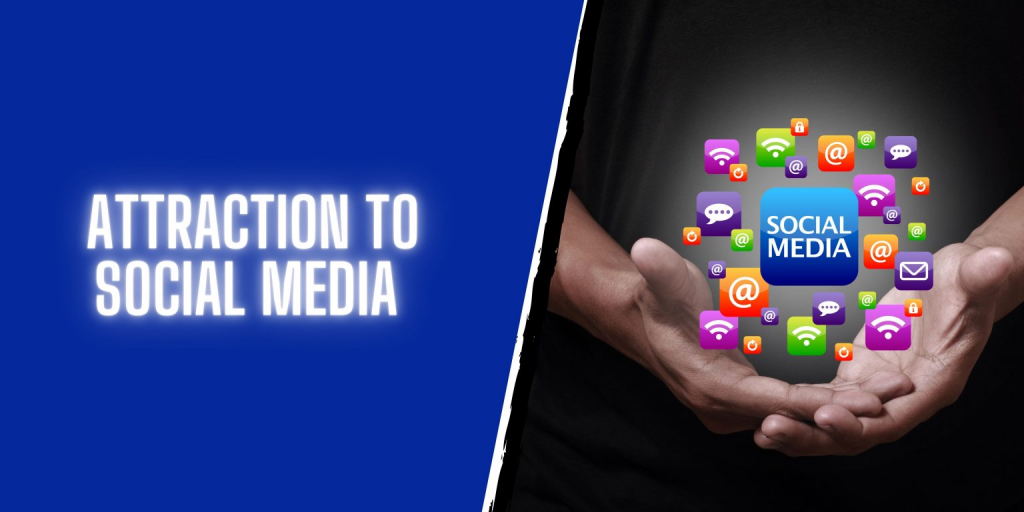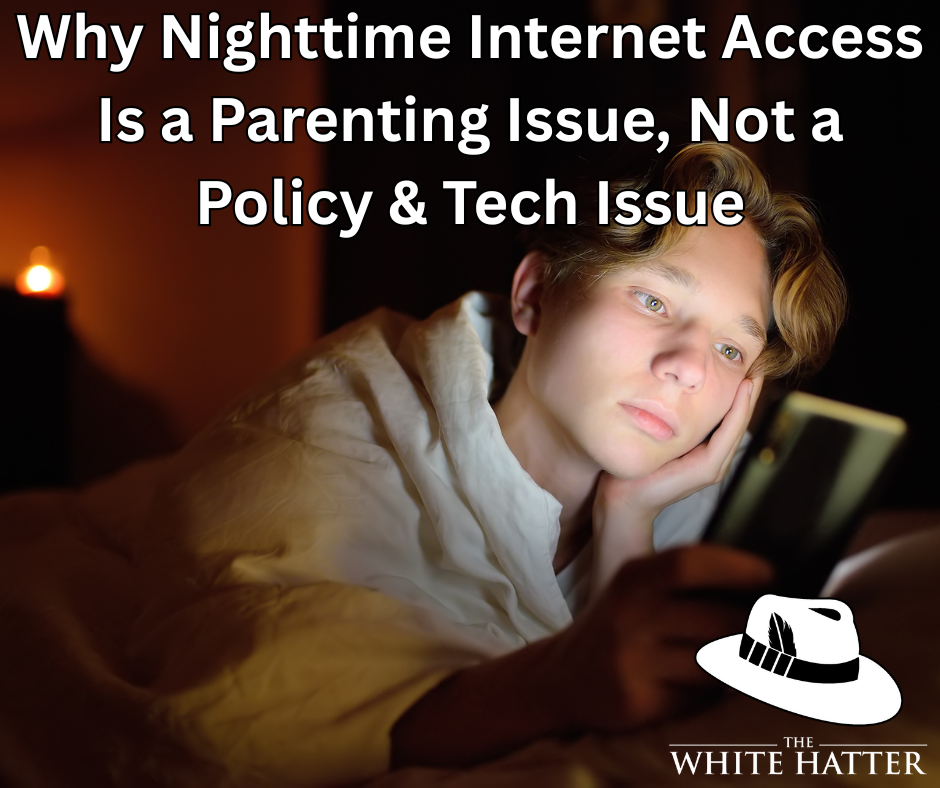Why Teens are so Attracted to Social Media
- The White Hatter

- Aug 30, 2022
- 6 min read
Updated: May 16

Chapter 3: Why Are Youth So Attracted to Social Media?
We are often asked, “Why are youth so attracted to social media?” This is not an easy question to answer, but we’ve identified five specific reasons:
#1) Entertainment:YouTube to our kids is just like a cable TV channel was to us as adults. Teens turn to social media for news, entertainment, to create memories, learn new skills, and experience laughter and tears.
#2) Information:Where we once used libraries for research, today’s teens use Google, Wikipedia, or simply ask Siri.
#3) It’s a personal space to call their own:Teens appreciate that many social media platforms offer spaces free from the peering eyes of parents and adults. We need to be reflective—remember when we were teens and wanted to get away from our parents? We went to a friend’s house, the movies, or played basketball. Today’s teens are doing the same thing—it’s just happening digitally.
#4) To socialize:Teens love to socialize, and social media allows them to do that 24/7. Today’s online teen is all about finding community.
#5) Monetization / iFandom:We met a teen who said he didn’t need a paper route to earn money—he monetized his YouTube channel instead.
As social scientist Dr. Danah Boyd states in her excellent book It’s Complicated:
“Teens hang out, gossip, flirt, people watch, joke around, and jockey for status. These dynamics are at the heart of teen life… so they relish any opportunity to log in and engage with peers online.”
From a brain development standpoint, Dr. Sherry Turkle from MIT adds:
“...they have a brain that is wired for what in psychology is called seeking behavior—the kind of thing that a Google search gives you: something new, something stimulating, something different.”
In their insightful book Behind Their Screens: What Teens Are Facing, authors and researchers Emily Weinstein and Carrie James explain:
“Teens are primed to crave and value social validation, which is part of how they make sense of where they fit into their social worlds. Their biological sensitivities to social feedback make them more susceptible to the pull of social media, which is at the ready with a promise of 24/7 access to likes and praising comments. Capacities for self-regulation and impulse control are also a work in progress during the teen years, which adds to the challenges of pulling away.”
Based on the sociological and psychological research to date, we believe the reason why social media is so popular with teens boils down to three basic needs they seek:
Curiosity
The joy of discovery
Peer engagement
So, Is Social Media Good or Bad for Our Kids?
To answer this, we like to use the analogy of a hammer:A hammer can be used as a weapon to harm, or it can be used as a tool to build and create. Social media is no different.
We believe most teens are using social media positively—to express creativity, learn new skills, and connect meaningfully with others. Later in this e-book, we’ll share examples to demonstrate this point.
The Teen Brain on Social Media
Most parents understand that the part of the brain responsible for self-control—the prefrontal cortex—isn’t fully developed until a person’s early twenties. Combine this with the brain’s ventral striatum—a system linked to decision-making and reward-seeking behavior—and it’s no wonder that teens may sometimes act impulsively.
This biological setup creates a “perfect storm,” where decisions are often made emotionally rather than logically. As a result, teens may make poor decisions socially, emotionally, and even sexually.
Have you ever asked your teen,
“Why would you ever do that?” or “That was a really stupid thing to do”?
Maybe it’s because of their underdeveloped prefrontal cortex… or maybe it’s something more.
We recently wrote an article challenging the common belief that brain development alone explains teen behavior—more on that later in this e-book.
Teens often live in the “now” and don’t always pause to think:
“If I do this, then that could happen later.”
This is why reinforcing safety, security, privacy, and digital literacy messages—as we do in this e-book—is so important. Teens might call it “parental nagging.” And yes, that’s exactly what it is. But research shows that repetition helps to embed important concepts in the developing teen brain.This is especially crucial for youth under the age of 13.
Most social media platforms require users to be at least 13 years old, but many parents don’t know this. A 2022 UK study found:
“Just four in ten parents of children aged 3–17 knew the minimum age requirement for most social media; 42% correctly said 13. Four in ten parents of 8–11-year-olds said they would allow their child to use social media (38%).”📚 Study Link
A 2021 report from Mott Children’s Hospital at the University of Michigan found that:
Half of children aged 10–12 and one-third of children aged 7–9 were using social media apps—despite these apps' Terms of Service prohibiting users under 13.📚 Study Link
This trend is also reflected in Common Sense Media’s report, which states:
“On average, 8- to 12-year-olds use about five and a half hours of screen media per day.”📚 Common Sense Report
And again, the 2022 UK report found:
“A majority of children under 13 had their own profile on at least one social media platform. 33% of parents of 5–7-year-olds said their child had a profile, and 60% of 8–11s said they had one.”📚 Study Link
Parenting Tip:
Yes, teen brains are still developing—especially in areas related to critical thinking and impulse control.
But based on our experience, we’ve seen plenty of adults—with fully developed brains—do things online that are far more mean-spirited, hateful, and criminal than teens ever would.
So we need to be cautious about blaming only brain development. External factors—like the disinhibition effect of digital platforms—also play a role. We’ll explore that concept further in this web book.
The Goal: Managing Risks & Maximizing Opportunities
Yes, onlife risks and opportunities go hand in hand.The goal for parents and caregivers is to help youth learn how to manage the risks, based on facts—not fear—and how to leverage opportunities in healthy and positive ways.
This is exactly what we strive to accomplish in all of our digital literacy and social media safety programs at The White Hatter, and it’s the guiding philosophy behind this e-book.
But Why Can’t They Just Stop?
We often hear from parents, “If social media is causing them stress, why don’t they just log off?” It's a fair question—but one that reveals how adults and teens experience the onlife world very differently.
Teens aren’t just scrolling for fun. They’re living in these spaces. Social media is integrated into how they experience friendships, status, identity, connection, and even self-worth. Logging off can feel like being socially invisible, or even socially abandoned.
For many teens, social media is not optional—it’s essential to their sense of belonging.
In the analog days, missing a group hangout might mean you were left out of a single event. Today, missing a Snapchat streak or group chat update can make a teen feel left behind in every conversation that matters to their peer group. The “Fear of Missing Out” (FOMO) is not just a buzzword—it’s a powerful emotional driver that’s intensified by the constant connectivity of apps like Instagram, TikTok, and Discord.
Even when they do want a break, algorithmic design can make it incredibly difficult. Features like infinite scroll, autoplay, notifications, streaks, and reward-based metrics are purposefully engineered to capture and hold attention. This isn’t just about poor self-control—this is about persuasive design.
As digital wellness advocate Dr. Nir Eyal explains:
"Technology is not inherently addictive; it becomes so when it's designed to hook. And today's platforms are optimized to hijack our attention, especially for those whose brains are still under construction.”
What Parents Can Do
Rather than banning social media or panicking over screen time, our approach encourages parents to do three key things:
1. Stay Curious, Not Furious
Ask your teen what they enjoy online. What’s their favorite app right now? Who do they follow and why? Which platforms make them feel better—or worse—about themselves? Use these questions as conversation starters, not judgment traps. When we lead with curiosity instead of criticism, teens are more likely to open up and let us in.
2. Shift From Screen Time to Screen Value
Time spent online isn’t all equal. There’s a big difference between mindlessly consuming content and creatively producing it. Is your teen watching videos… or making them? Are they comparing themselves to influencers… or using social media to inspire others or support a cause? Shift the focus from how long they’re online to what they’re doing and how it’s making them feel.
3. Teach Digital Self-Regulation
Just like we teach kids how to manage money or emotions, we need to teach them how to manage their digital lives. This means helping them recognize when they’re being emotionally triggered by likes or comments, when it’s time to log off, and how to practice digital hygiene—like turning off notifications, setting app limits, or taking screen breaks.
The Onlife Balancing Act
The reality is that social media isn’t going anywhere. It’s a foundational part of teen life today. The goal is not to eliminate risk—it’s to raise informed, empathetic, and digitally literate young people who can thrive both online and offline.
At The White Hatter, we often say:
“Don’t delay the conversation—redirect it toward critical thinking, responsible choices, and healthy engagement.”
Because in the end, social media isn’t the villain or the hero—it’s the stage. And our youth are the actors trying to figure out who they are and how they want to show up in the world.
Let’s give them the tools—and the trust—to do it wisely.














